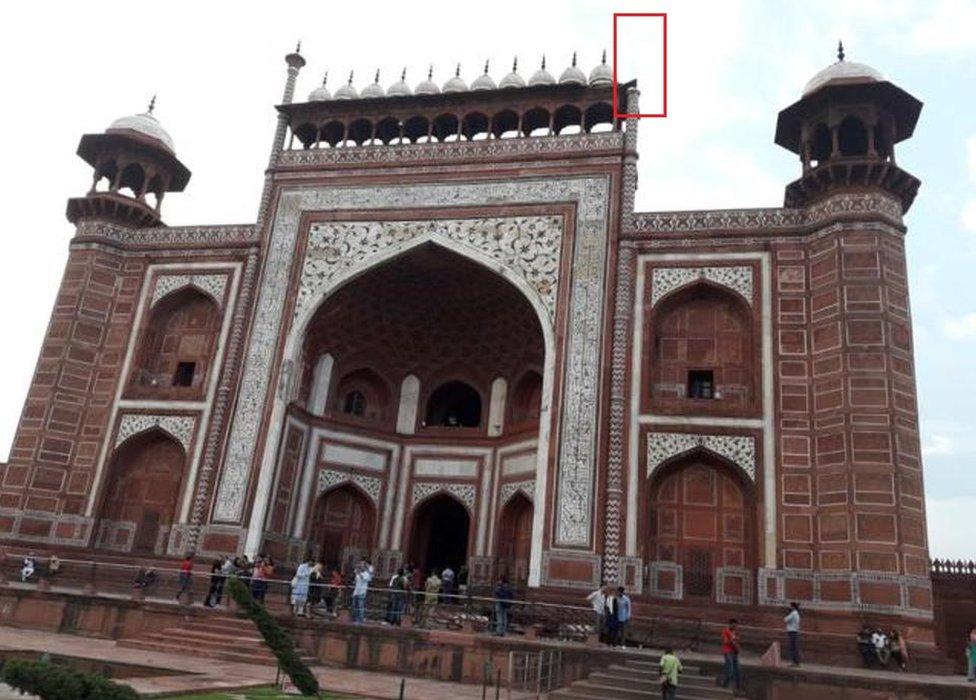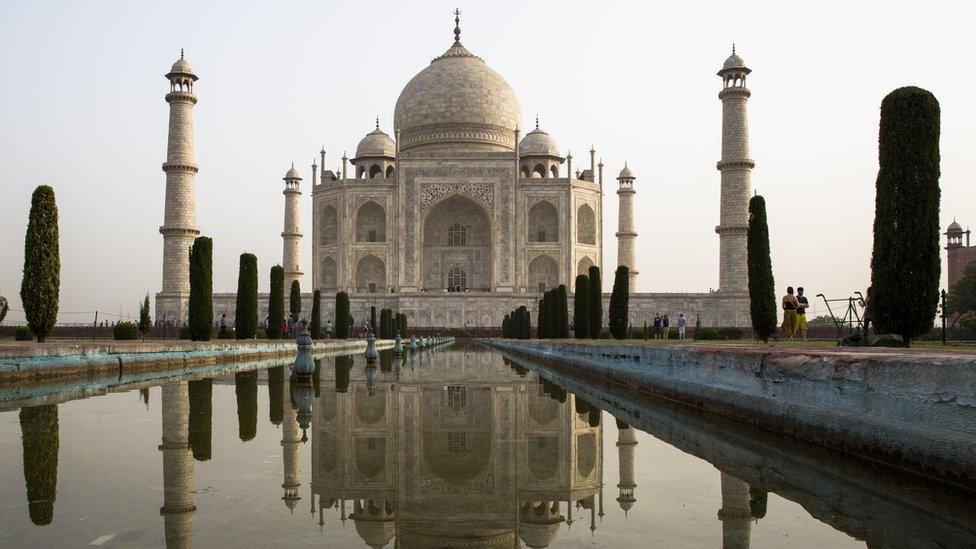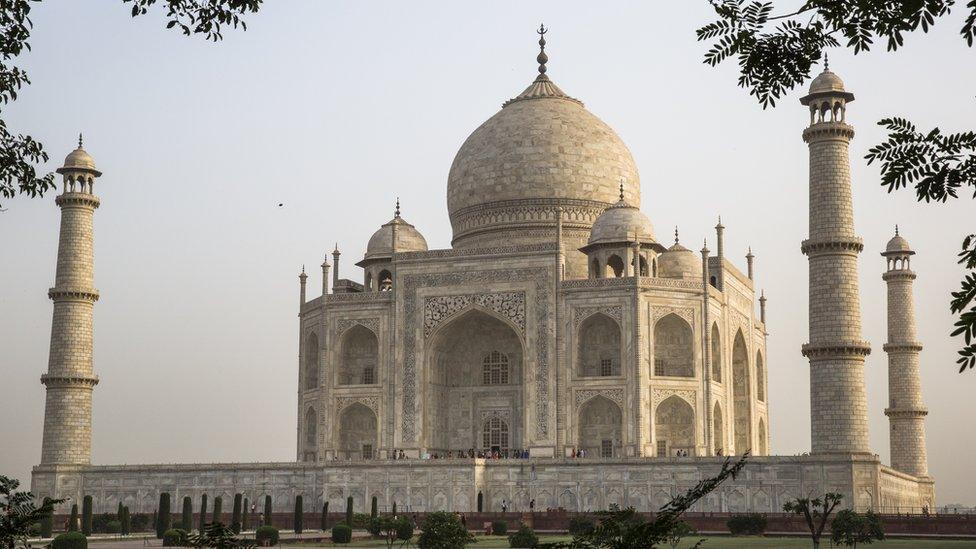India Taj Mahal minarets damaged in storm
- Published

One of the destroyed minarets was located at the royal gate to the Taj Mahal
A storm has damaged two minarets located at different entry gates of the iconic Taj Mahal in the northern Indian city of Agra.
Officials told the BBC that winds blowing at 130kmh (80mph) caused the 12ft (4m) pillars to collapse.
The four longer minarets that surround the main structure remain intact.
The 17th Century mausoleum attracts about 12,000 visitors a day and is one of the world's most popular tourist attractions.
One of the destroyed minarets was located at the royal gate where tourists often get their first glimpse of the monument.
The other was located at the southern gate.
Authorities said that work had begun to restore the damaged structures.

One of the minarets damaged in the storm

No one was injured by the falling pillars
India's official recorded history says that Mughal ruler Shah Jahan built the Taj Mahal in memory of his queen, Mumtaj Mahal.
The monument's complex structure of white marble domes and minarets inlaid with semi-precious stones and carvings is considered the finest example of Mughal art in India
But it has suffered damage due to pollution and construction activity in recent years.
The Archaeological Survey of India, the custodian of the country's monuments, said in January that the Taj Mahal was at risk of losing its sheen and structure due to increased pollution levels in Agra.

The Taj Mahal was built by the Muslim emperor Shah Jahan in 1643
- Published16 October 2017

- Published2 November 2017
